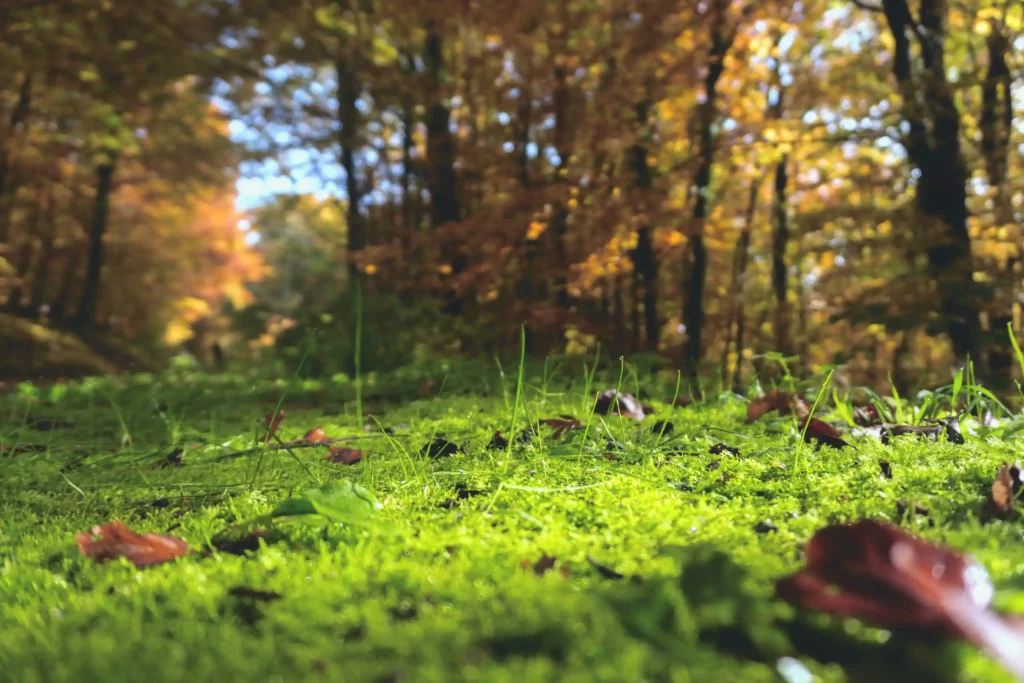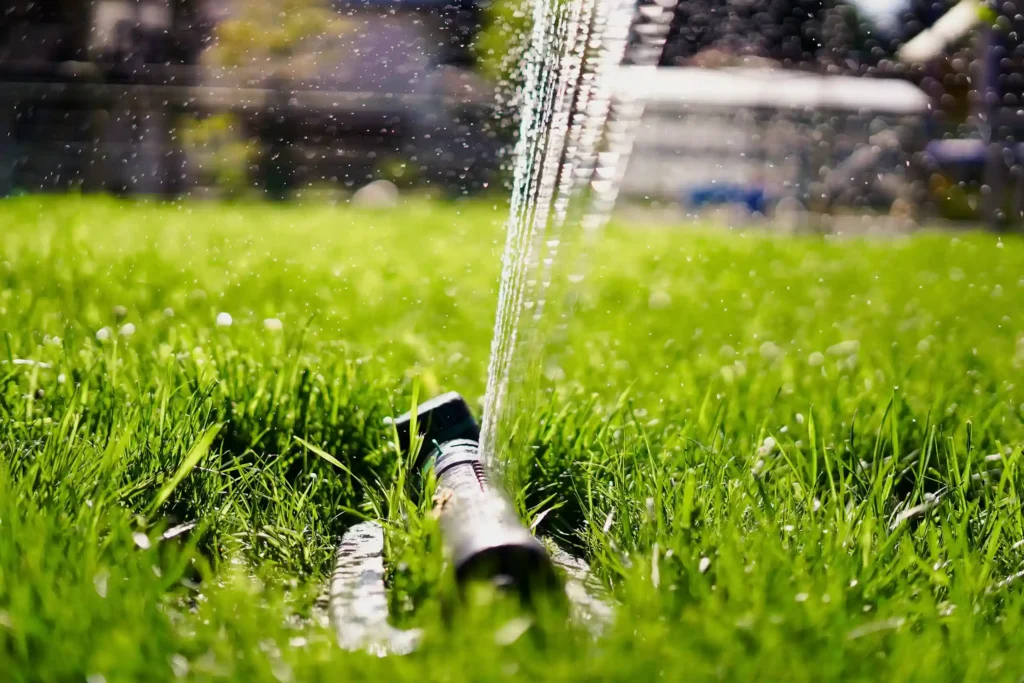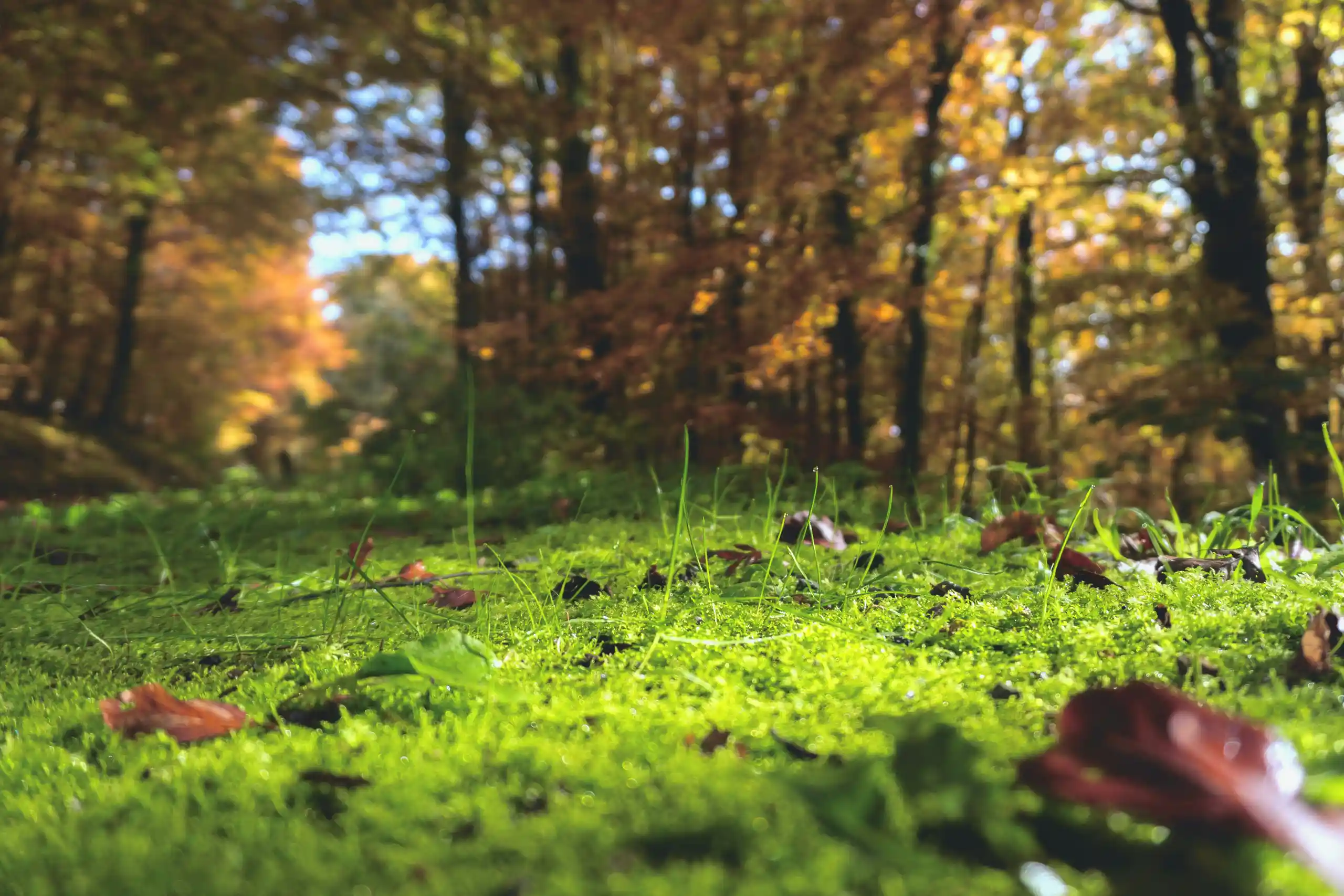After a long summer spent enjoying your lush green lawn, it is time to start preparing it for the harsh winter conditions.
Autumn is the perfect time to change up your lawncare routine and keep your garden looking its best.
In this guide, we will cover everything you need to know about lawn maintenance in autumn and how to easily get started.
Why is autumn lawn care important?
It is not unusual for lawns to look a little worse for wear after summer, due to warmer weather, lack of rain, and increased use.
Summer can often leave lawns stressed, thin, and even with bare patches.
However, autumn offers the ideal conditions to repair and prepare your lawn for the colder months.
Taking a proactive approach and providing effective grass care in autumn allows your lawn to strengthen its roots, access nutrients, and address issues like soil compaction.
Preparing your lawn in autumn ensures that it is strong, healthy, and ready to withstand winter.

What to do to your lawn in autumn?
Autumn is considered one of the best seasons to carry out any lawn care or maintenance, due to the cooler temperatures and increased rainfall.
These conditions, along with the warm soil temperatures and lower risk of pests, create the perfect environment for your lawn to recover from the stress of summer.
Follow these simple steps to prepare your lawn for winter and keep it healthy:
- Reduce mowing frequency. Grass growth begins to slow during the autumn months, so it is important to gradually reduce the cutting height on your mower. We do not recommend giving your lawn any drastic cuts in autumn, as this will leave it exposed to pests and frost damage in winter.
- Rake and remove leaves. Leaves and debris can quickly build up on your lawn over time if not removed, resulting in a thick layer of thatch. Thatch acts as a barrier, preventing your grass from receiving the air, light, and nutrients it needs to grow. If there is significant thatch build-up, you may want to consider raking a little deeper and scarifying your lawn to rid it of thatch and moss.
- Aerate your lawn. Autumn is the ideal time to aerate cool-season grass varieties like Kentucky Bluegrass and Fescue, as this is the time when they will be actively growing. This process is essential to maintaining a healthy lawn throughout the seasons and helps to relieve soil compaction, encouraging stronger root development and nutrient penetration.
- Overseed bare spots. After the hot temperatures of summer and increased foot traffic, it is common to find thin or bare patches on your lawn. You can thicken up areas of your existing turf by overseeding, a process that involves applying new grass seed to your lawn.
- Feed regularly. Nourish your lawn with our specially formulated Nourish & Nurture Fertiliser, blended with all the essential nutrients your lawn needs to thrive and survive the harsh conditions of winter.
- Control weeds. Autumn provides the perfect conditions for tackling any weeds that are littering your lawn. Weeds can be removed using our high-quality Weed Wipeout treatment or naturally using common items found in your kitchen cupboards. For more tips on ridding your lawn of weeds, head over to our guide on how to kill weeds.
- Avoid overwatering. It is important to remember that autumn typically brings more rainfall, reducing the need for regular watering. You should only supplement water if necessary, as overwatering can increase the risk of pests and lawn diseases.

Does grass still grow in autumn?
Yes, grass continues to grow in autumn, but its growth rates depend on the type of grass and your local climate.
Cool-season grasses like Perennial Ryegrass, Kentucky Bluegrass, and Fescue thrive in autumn due to its cooler temperatures and increased rainfall.
During autumn, cool-season grasses enter an active period of growth, focusing on strengthening their root systems and repairing any damage caused by the warmer weather in summer.
However, the growth rate of warm-season grasses like Bermuda, St. Augustine, and Zoysia begins to slow down during autumn.
From their name, it is not hard to tell that these types of grasses prefer warmer temperatures, so they will usually begin to enter a period of dormancy as they prepare for winter.
If your lawn’s growth has started to slow, do not be alarmed, as both grass types will focus on root development during the autumn months, which is essential for surviving winter.
Should I leave grass clippings on my lawn in autumn?

Leaving grass clippings on your lawn can actually be a great part of autumn lawn care under the right conditions.
Grass clippings are a great natural fertiliser for grass, returning valuable nutrients like nitrogen back into the soil.
Many people believe that leaving grass clippings on your lawn can cause a build-up of thatch, but this is not the case if done correctly.
You should leave grass clippings if:
- You mow your lawn regularly. Short clippings will decompose quickly and easily integrate into the soil.
- Conditions are dry. Do not leave clippings on your lawn if there has been rainfall, as this will cause clippings to clump together and create a barrier blocking airflow and sunlight.
- Your lawn does not have excessive thatch. A layer of thatch (less than half an inch) is normal for any lawn. However, if your lawn has any more than this, leaving grass clippings can add to the thatch and create more of a problem for your lawn.
If the conditions are not ideal for leaving grass clippings on your lawn, make sure they are cleared weekly to avoid build-up.
You can always add them to your compost heap and allow them to decompose to feed your lawn in the spring!
Should you cut grass shorter in autumn?
An essential part of lawn maintenance in autumn is mowing your lawn.
However, you want to ensure you are mowing regularly and gradually reducing your lawn’s height, as opposed to drastically cutting, which can leave your lawn at risk.
Cutting grass too short can weaken it, making it more susceptible to:
- Frost damage, which can kill the grass during winter.
- Weed invasion, as sparse grass allows weeds to spread more easily.
- Fungal diseases, which thrive in damp, cold conditions.
- Root stress, reducing the lawn’s ability to store vital nutrients needed for winter survival.

To avoid this, we recommend raising your mower’s blades higher than usual to prevent damaging the grass blades.
You should continue mowing your lawn until the ground starts to freeze over, as this will result in your grass staying healthy and resilient through winter.
Ready to tackle autumn lawn care like a pro?
Autumn is the season of recovery for your lawn, offering the perfect conditions to restore your lawn back to full health.
By taking a proactive approach, you can easily improve your lawn’s health and ensure it can withstand the winter weather.
To help you get started, why not take our quiz to find the best products to support your lawn’s journey back to health today?
